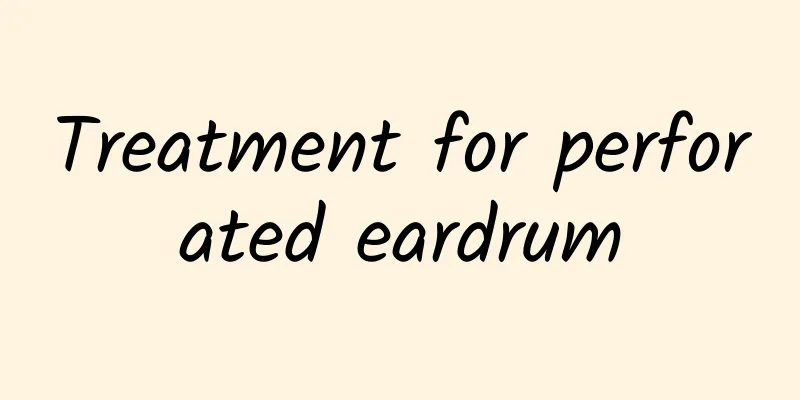What are the medicinal properties of Xanthium sibiricum?

|
Many people may not know what Xanthium sibiricum is, but many of us know about it or have even seen it with our own eyes. We can often see it on the roadside, but no one pays attention to it. You may not have thought that it is actually a kind of medicine, and it generally grows in Heilongjiang and other places in my country. It has a very good effect and can treat many diseases. So, what are the medicinal properties of Xanthium sibiricum? Xanthium sibiricum, the name of a traditional Chinese medicine. Other names: Xanthium sibiricum, Xanthium sibiricum, also called magnetic head mang (chi head mang) in Cantonese. The fruit with involucre of Xanthium sibiricum, an annual herb of the Asteraceae family, belongs to the genus Xanthium. Xanthium sibiricum is a commonly used Chinese herbal medicine with the effects of dispersing wind, removing dampness and opening the orifices. Xanthium sibiricum is an annual herb. Its fruit is spindle-shaped or oval, 1 to 37.5px long and 0.4 to 17.5px in diameter. The surface is yellow-brown or yellow-green, with hooked thorns all over the body, two thicker thorns on the top, separated or connected, and a fruit stalk mark at the base. It is hard and tough, with a longitudinal septum in the center of the cross section, and two chambers, each containing one achene. The achene is slightly fusiform, with one side relatively flat and a protruding stylopodium at the top. The pericarp is thin, gray-black, and has longitudinal stripes. It often grows in plains, hills, low mountains, wilderness roadsides and field edges. 1. Antibacterial effect In vitro experiments have shown that the decoction of Xanthium sibiricum has an inhibitory effect on Staphylococcus aureus, Pneumococcus, and Group B Streptococcus, with the strongest inhibitory effect on Staphylococcus aureus. Its acetone or ethanol extract also has an inhibitory effect on Trichophyton rubrum in vitro. 2. Effects on respiration, blood pressure and heart Intravenous injection of Xanthium sibiricum injection can lower the blood pressure of anesthetized rabbits and dogs, and significantly increase the respiratory amplitude and frequency. It also has a stimulating respiratory and antihypertensive effect on conscious rabbits. It has a transient inhibitory effect on the isolated guinea pig heart. 3. Antitussive effect Gavage of Xanthium sibiricum decoction to mice has an antitussive effect on cough caused by sulfur dioxide (SO2) and ammonia. 4. Effects on blood sugar The glycoside AA2 in Xanthium sibiricum can reduce blood sugar in normal animals, but cannot reduce hyperglycemia in rats caused by alloxan. The glycoside rhamnose contained in Xanthium sibiricum not only cannot increase the formation of animal liver glycogen, but promotes the reduction of glycogen. If rhamnose is injected first and then adrenaline, the latter's blood sugar increase reaction will weaken or disappear. This may be because rhamnose has reduced liver glycogen. The efficacy of Xanthium sibiricum 1. Lowering blood sugar: 1 mg/kg of white crystalline glycoside (C31H-48O24S2) can lower the blood sugar level of normal rabbits. 2. Effect on the respiratory system: 0.3 ml/kg of 100% decoction of Xanthium sibiricum has an antitussive effect on mice; 15 ml/kg has no expectorant effect on rabbits. Tincture injection has a respiratory stimulant effect on frogs, while large doses have an inhibitory effect. 3. Effects on cardiovascular system: Intravenous injection of Xanthium sibiricum has a temporary antihypertensive effect on rabbits and dogs. 4. Anti-inflammatory effect: The diterpene hydroxy acid atractylodesin contained in this product has been shown to have anti-inflammatory effects in the rat carrageenan edema test. The LD50 for intraperitoneal injection, subcutaneous injection and oral administration are 2.9, 5.3 and 350 mg/kg, respectively. 5. The decoction of Xanthium sibiricum has certain antibacterial effects against Staphylococcus aureus in vitro, and its acetone or ethanol extract also has antibacterial effects against Trichophyton rubrum in vitro. 6. Toxicity: Analysis showed that Xanthium sibiricum oil (once heated to 120°C) and the protein it contained (insoluble in water and denatured during the extraction process) had no obvious toxicity, while the water extract prepared from the defatted part was highly toxic. Everyone should pay attention that Xanthium sibiricum also has a bad side. When taking it, everyone should pay attention to the dosage, because eating too much will be bad for the body and produce toxins. If you are poisoned by eating Xanthium sibiricum, you can immediately have your stomach washed to expel all the toxic substances in your body. You can then take milk or soy milk. |
<<: What are the four properties and five flavors of traditional Chinese medicine?
>>: What are the medicinal properties of hemp seed?
Recommend
What to do if you have anal fissure
Rectal prolapse, hemorrhoids, and anal fissures a...
Heart aortic valve replacement
Aortic valve replacement is actually aortic valve...
How to treat peeling palms
In summer and autumn, are you troubled by sweatin...
Calf muscle soreness and weakness
Our body's ability to move flexibly is closel...
How long will luteinization last?
For women, as they age, the probability of pregna...
Is Throat Congestion a Symptom of Anxiety?
It is said that a good attitude is the best way t...
Itchy skin caused by liver disease
Liver disease generally does not cause skin itchi...
What is leucorrhea?
Many people may experience this situation in life...
What causes acne on the face
Acne vulgaris is actually what we often call acne...
Why are toenails white? Three reasons for toenails white
If the toenails are just turning white, it means ...
What can I drink to lower my blood sugar quickly?
Lowering blood sugar is a measure taken by some p...
Can I drink mung bean water when I am pregnant?
Mung bean water has a good health care effect, es...
What to eat for ovarian cysts? Two recipes worth choosing
For people with ovarian cysts, once they find out...
What medicine should I take for carpal tunnel syndrome?
People who work on computers and those who like t...
How long does it take to get out of bed after a broken ankle?
People will encounter some bumps and bruises in t...









